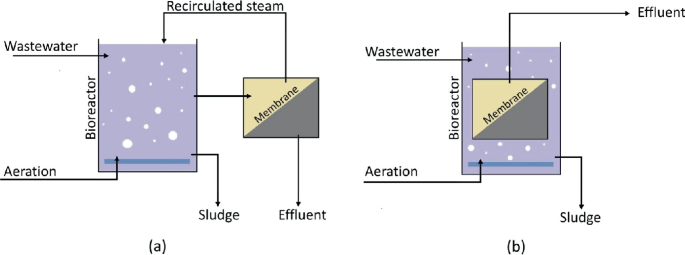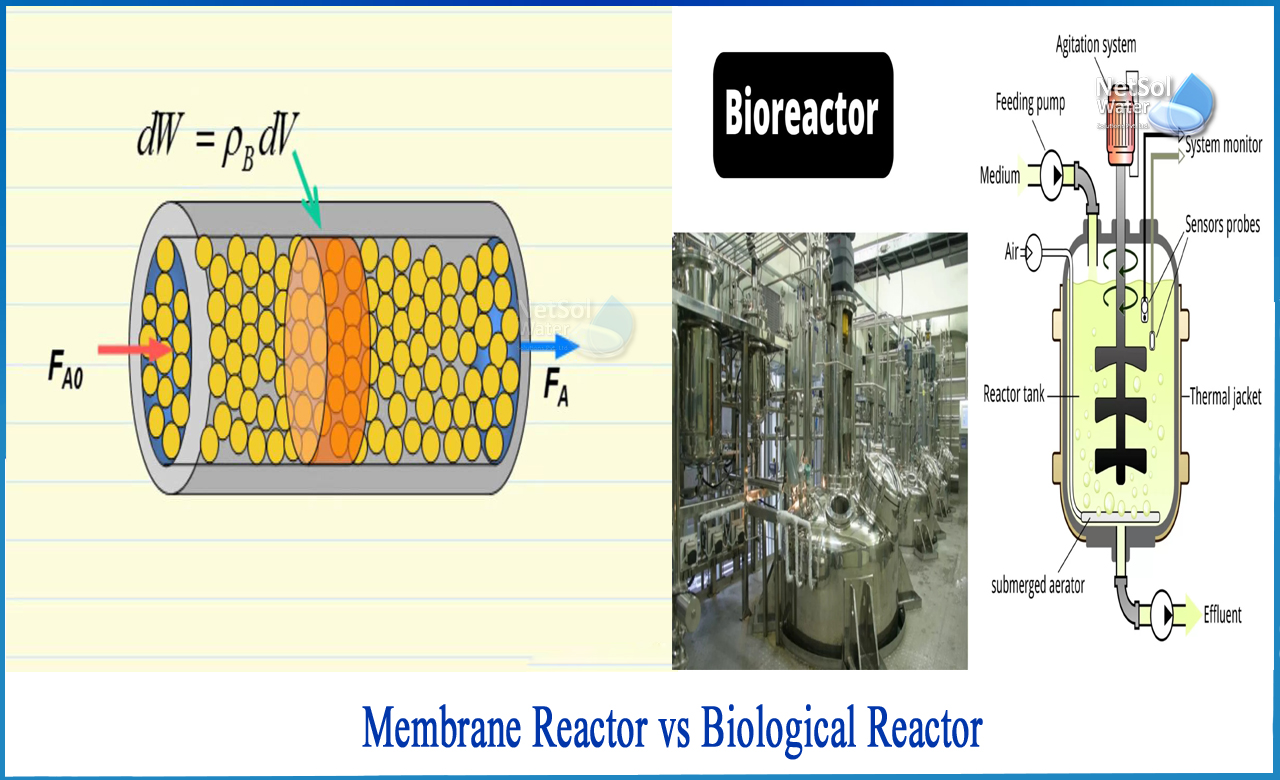How Membrane Bioreactor Contributes to the Reduction of Energy Consumption in Water Treatment
How Membrane Bioreactor Contributes to the Reduction of Energy Consumption in Water Treatment
Blog Article
Membrane Bioreactors Described: Effective Solutions for Clean Water
Membrane layer bioreactors (MBRs) have actually emerged as a sophisticated service for resolving the pressing challenges of wastewater treatment. By incorporating organic processes with innovative membrane purification, MBRs not just enhance the high quality of cured water yet also lower the spatial requirements of therapy centers. As environmental issues intensify, the duty of MBR modern technology in advertising lasting water management comes to be increasingly significant. The intricacies of their procedure, benefits, and possible applications merit a closer assessment to totally comprehend their effect on the future of water treatment.

What Are Membrane Layer Bioreactors?
Membrane bioreactors (MBRs) are sophisticated wastewater treatment systems that combine biological destruction processes with membrane filtering innovation. This integration permits the efficient elimination of pollutants from water, making MBRs a preferred option in various applications, consisting of metropolitan wastewater therapy and industrial effluent administration.

Among the essential benefits of MBRs is their capacity to create high-quality effluent, often suitable for reuse in irrigation or commercial processes. Furthermore, MBRs require a smaller sized impact compared to standard therapy systems, making them perfect for metropolitan settings where space may be restricted.
In addition, MBRs can properly take care of varying influent loads and are less susceptible to the impacts of toxic shocks. These attributes add to their expanding popularity as a sustainable remedy for resolving the raising demand for tidy water while reducing ecological impacts.
Just How Membrane Layer Bioreactors Work
While the procedure of membrane layer bioreactors (MBRs) might appear complex, it fundamentally focuses on the harmony between organic procedures and membrane filtering. MBRs integrate a biological treatment procedure, generally turned on sludge, with a membrane layer separation device to deal with wastewater efficiently.
In an MBR system, wastewater is very first introduced right into a bioreactor where microorganisms weaken organic issue and other contaminants. The organic task lowers the focus of pollutants while promoting the development of biomass. Following this biological treatment, the mixed alcohol undergoes membrane purification, which can be microfiltration or ultrafiltration, relying on the desired effluent top quality.
The membranes function as a physical barrier, permitting water and tiny solutes to pass while preserving suspended solids and larger molecules. This enables the system to preserve a high concentration of biomass within the reactor, enhancing the treatment effectiveness.
Furthermore, the constant separation of treated water from the biomass helps with a compact layout and reduces the impact of the treatment facility. Overall, the combination of biological deterioration and membrane layer filtering in MBRs results in reliable and reputable wastewater therapy, making sure high-quality effluent suitable for various applications.
Advantages of MBR Innovation
One of the key advantages of membrane bioreactor (MBR) innovation is its ability to produce premium effluent with a dramatically reduced impact contrasted to standard wastewater therapy approaches. MBR systems effectively integrate organic treatment and membrane filtration, resulting in premium elimination of impurities, consisting of put on hold solids, pathogens, and natural issue. This capability causes effluent that typically satisfies or goes beyond strict regulatory standards for reuse and discharge.
Furthermore, MBR technology allows for greater biomass focus, which enhances the treatment efficiency and minimizes the called for reactor quantity. This small layout is particularly advantageous useful content in metropolitan areas where space is limited. The operational versatility of MBR systems additionally indicates they can adjust to this article varying influent qualities and circulation rates, making them appropriate for a variety of applications.
Additionally, the lowered sludge production connected with MBR processes contributes to lower operational and maintenance costs. The membrane layers act as a physical obstacle, minimizing the risk of blocking and making it possible for longer operational periods between cleansing. On the whole, the advantages of MBR innovation make it an eye-catching option for lasting wastewater treatment, resolving both environmental worries and the demand for reliable resource monitoring.
Applications of Membrane Bioreactors
With their adaptability and performance, membrane bioreactors (MBRs) locate applications across different markets, consisting of local wastewater treatment, commercial processes, and even water improvement. In local setups, MBRs give a small solution for dealing with wastewater, efficiently getting rid of pollutants while at the same time creating high-quality effluent that meets stringent regulatory standards. This makes them especially ideal for locations with minimal space.
In industrial applications, MBR innovation is used for dealing with procedure water, especially you can try these out in industries such as food and beverage, drugs, and petrochemicals. These markets gain from MBRs' capacity to take care of high natural lots and their performance in recouping useful resources from wastewater, such as nutrients and water.
Additionally, MBRs play a vital function in water reclamation campaigns, enabling the reuse of dealt with wastewater for irrigation, industrial procedures, and even as potable water after more treatment (Membrane Bioreactor). Their efficiency in eliminating contaminants and virus makes them a trusted choice for ensuring water high quality in various reuse applications
Future of Water Treatment Solutions
The future of water therapy options is poised for transformative improvements driven by technical technology and boosting ecological understanding. As international water shortage comes to be a pressing problem, new methodologies, consisting of membrane bioreactor (MBR) systems, are set to play a crucial role in boosting the performance and sustainability of water treatment processes.
Emerging technologies such as expert system and artificial intelligence are expected to maximize treatment operations, permitting real-time monitoring and predictive maintenance. This will certainly improve the total integrity and effectiveness of water therapy facilities. Innovations in membrane products, such as graphene and nanofiltration, promise to enhance permeation rates and reduce fouling, leading to reduced energy intake and functional costs.
Additionally, the integration of renewable power resources right into water therapy plants will certainly contribute to greener practices. The circular economic situation model will certainly additionally acquire traction, encouraging the healing of useful sources from wastewater, such as nutrients and power.
Conclusion

Membrane layer bioreactors (MBRs) have actually arised as an advanced solution for addressing the pressing challenges of wastewater therapy. By incorporating biological processes with advanced membrane filtration, MBRs not only boost the quality of treated water yet also minimize the spatial requirements of treatment centers.One of the vital benefits of membrane bioreactor (MBR) modern technology is its ability to create top quality effluent with a considerably decreased impact contrasted to standard wastewater treatment techniques.With their flexibility and effectiveness, membrane bioreactors (MBRs) discover applications across numerous sectors, consisting of metropolitan wastewater therapy, commercial processes, and even water improvement.In final thought, membrane bioreactors stand for a substantial innovation in wastewater therapy innovation, incorporating organic procedures with effective membrane filtering to produce top quality effluent.
Report this page